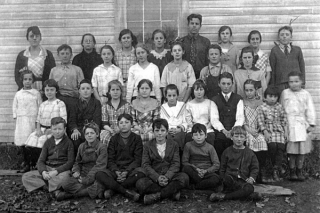Town History

The Town of Deerfield was originally the southwestern part of Nottingham from the original Nottingham grant of 1722. In 1766, the residents petitioned and received permission from the royal governor to become a separate town. Deerfield was settled in the late 1730's. A garrison was built for protection from the Indians near the Parade in 1742. The town covers 52 square miles. Its terrain is largely rocky and hilly. Lying along the main route between Concord and Portsmouth, the town soon became an active center of trade and commerce and remained so throughout its early history. Several small centers developed and thrived.
Shortly after its incorporation, the residents erected a Meeting House on Chase's Hill or what became known as the Old Center. Deerfield Parade, located along the route to Portsmouth became quite a busy location with an inn for travelers, a store, and an academy to educate the sons and daughters of the doctors, lawyers, and other prominent citizens, who lived in its fine homes. Leavitt's Hill became the site for a store, a well-known creamery, and a post office. South Road, which also lay on the main highroad, quickly became a center, of trade, commerce, and hospitality.
Education of its children has been an important part of the history of Deerfield. After choosing a site for the Meeting House and organizing a church, one of the first matters the early citizens considered was establishment of a grammar school. The first one-room schoolhouse must eventually have been established, and by the mid-19th century, the town had 15 school districts and 13 school buildings - one within walking distance of almost all children. Each school district operated almost autonomously with its own moderator, school board, clerk, and auditor.
Four Periods of Deerfield History
Today, forest has reclaimed much of the town which had once been painstakingly cleared. Old stone walls which marked the edges of mowed fields have disappeared into the forest, and new trees choke old cellar holes. It should be noted, however, that forest land is important to the community for purposes of recreation and conservation. This changing view of the forest's value provides a way of dividing the town's history into four periods.
Before 1770 - The earliest period, before 1770, was a time of clearing the forest, settling the land, building houses, and erecting the first meeting house. By 1773 the population had reached 911.
1770 to 1850 - The next period was a busy and prosperous time for the town. Several main roads had been laid through the town; one lead from Exeter to Concord. Drovers and freighters brought people and business to the town. They filled taverns like the Mack Tavern on South Road, where a night's accommodations including drink and song could be found. Water-powered manufacturing was established on many of the brooks and rivers. Blacksmiths, cobblers, and people pursuing every occupation could be found working at home in early Deerfield. These jobs supplemented the main work of farming. Skills and houses passed from generation to generation. Much of the town's land has remained in the same families for 200 years. By 1820 the population reached 2133, and the forests had been almost completely cleared.
After 1850 - Deerfield's population began a steady decline which continued for nearly 100 years. This third period saw forests encroach upon farmland and church congregations dwindle. Reasons for the decline included the unprofitability of farming and the advent of railroads to the area. Deerfield was bypassed because of its hilly terrain. Freighters and travelers no longer frequented the Mack Tavern. The fiddlers were silent. During this same period some old farms became a summer getaway for tourists, and the lakes and ponds became popular vacation spots. By 1850 the "New Center" had three churches, a store, a hotel, and a new Town Hall. During the 1880s the town began to develop as a modest summer community, as tourists began to come to enjoy the nearby lakes and mountains.
By the census of 1930, however, the town's population had dropped to a mere 635 year-round residents. Following World War II, however, this trend began to reverse as commuters working in nearby cities began to buy homes in the country.
After 1950 - The fourth and current period in Deerfield's history has been chiefly characterized by a reversal of the long population decline. A gradual increase after 1950 became rapid growth during the 1980's. This time around, expansion of the NH economy has had a different effect. Many new residents have been attracted to Deerfield because of its central location and natural and architectural beauty. By 1950 the town's population and traffic patterns had changed sufficiently that the town felt it needed a central school. In that year the George B. White School was built. It was named in honor of Mr. George B. White of South Road. Upon his death, his widow auctioned the estate and gave the proceeds to help build the new school. During the 1970s and 1980s the town's population exploded. During the decade the population increased by 67%, from 1,178 to 1,979. By 1990 the population was around 3,300. Forest land is again being cleared for new housing and development is bringing change to the town.
The town recognizes the need to provide for growth. But it also recognizes how precious Deerfield's heritage is and hopes that its special character will be preserved as the town grows.

